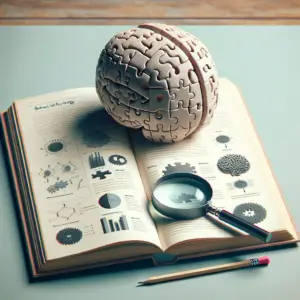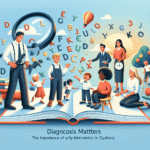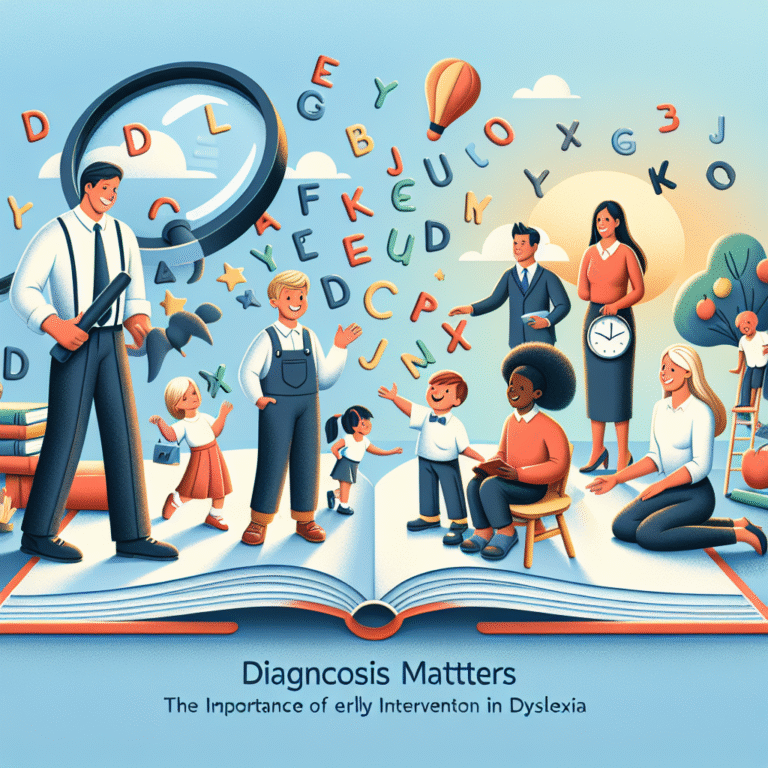Understanding Learning Disabilities: An Essential Guide for Parents of Struggling Students

Introduction
Imagine watching your child struggle with something that seems so simple to others; the frustration, the tears, and the confusion can be heartbreaking. If you’ve found yourself in this situation, you are not alone. Understanding learning disabilities is crucial for parents of struggling students, as it directly impacts their educational journey and emotional well-being. Learning disabilities affect how individuals process, retain, and express information, which can lead to challenges in school and life. But there is hope! With the right support and understanding, you can help your child thrive despite their learning hurdles.
This comprehensive guide’ll delve deep into understanding learning disabilities, providing practical advice, real-life stories, and insight that empower you as a parent. No matter the specific learning challenge, recognizing the signs, seeking an appropriate diagnosis, and implementing effective strategies can make a profound difference.
What Are Learning Disabilities?

Defining Learning Disabilities
Learning disabilities (LD) are neurological disorders that affect the brain’s ability to receive, process, or communicate information. These disabilities are not indicative of a person’s intelligence; in fact, individuals with learning disabilities often have average or above-average intelligence but struggle with specific academic skills.
Common Types of Learning Disabilities
- Dyslexia: characterized by difficulties in reading, including challenges with phonemic awareness, decoding, and fluency.
- Dyscalculia: affects mathematical skills, including number sense, memorizing facts, and understanding math concepts.
- Dysgraphia: impacts writing abilities, including difficulty with handwriting, spelling, and organizing thoughts on paper.
- Auditory Processing Disorder (APD): affects how the brain interprets sounds, which can hinder understanding spoken language.
- Visual Processing Disorder: involves difficulty interpreting visual information, affecting reading and math skills.
Understanding learning disabilities is crucial for parents, as this knowledge empowers them to advocate effectively for their children.
Signs and Symptoms
Recognizing the signs of learning disabilities early can lead to timely intervention. Here are some common indicators:
- Struggles with Reading and Writing: If your child frequently fails to grasp reading comprehension or has messy handwriting, it could be a sign.
- Difficulty in Math: Difficulty understanding concepts or performing calculations may indicate dyscalculia.
- Problems Following Instructions: If your child frequently forgets multi-step tasks or loses track of instructions, this might indicate a processing issue.
- Low self-esteem: Students with learning disabilities often experience frustration and may develop negative perceptions of their abilities.
Case Study: Emma’s Journey with Dyslexia
Background: Emma is a bright 10-year-old girl who loves stories; however, she struggles significantly with reading. Emma’s mother, Sarah, noticed that her daughter often avoided reading aloud and would rage-quit her homework when it included a lengthy text.
Diagnosis and Support: After consulting with a psychologist, Sarah learned that Emma had dyslexia. They worked together to implement structured literacy interventions, which included phonics-based instruction tailored to Emma’s needs.
Outcome and Analysis: Over time, Emma’s confidence grew. With a specialized reading program and supportive teachers, she transformed her reading abilities, moving from frustration to fluency. This case shows that understanding learning disabilities can unlock a path toward success when paired with appropriate support and resources.
Effective Strategies for Parents
1. Foster a Supportive Home Environment
Creating a nurturing space can significantly alleviate stress for your child. This environment should include:
- Designated Study Area: Keep a quiet, clutter-free space for homework and studying.
- Routine: Establish a consistent daily routine that includes time for homework and reading.
- Encouragement: Use positive reinforcement to celebrate small victories.
2. Collaborate with Teachers
Communication with educators is essential. Here are steps to take:
- Schedule regular meetings: Discuss your child’s progress and any concerns.
- Request Accommodations: Work with the school to provide accommodations, such as extra time on tests or modified assignments.
- Engage in the Learning Process: Stay involved in your child’s academic life, including attending school events and parent-teacher conferences.
3. Seek Professional Help
Consider consulting with specialists who focus on learning disabilities. Options include:
- Psychoeducational Evaluations: These assessments can provide insights and guide intervention strategies.
- Speech and Language Therapists: This expertise can foster better communication skills for children with language processing issues.
- Special Education Services: Investigate individualized education programs (IEPs) to ensure your child gets tailored support.
Case Study: Jacob and His Struggles with Math
Background: Jacob, a 12-year-old boy, had always faced challenges in math. His report cards were dotted with low grades, and he often expressed frustration when answering questions in class.
Diagnosis and Support: After a teacher recommended an evaluation, Jacob was found to have dyscalculia. His parents worked with the school to develop an IEP and enlisted a math tutor trained in multi-sensory learning techniques.
Outcome and Analysis: With support, Jacob began visualizing math concepts through games and manipulatives, transforming his understanding of numbers. This case exemplifies how targeted interventions can revitalize a struggling student’s academic experience.
Understanding Learning Disabilities: The Role of Advocacy
Advocacy is one of the most powerful tools you have at your disposal as a parent. You must be informed and proactive in your child’s education. Here’s how:
1. Research Your Rights
Become familiar with federal and state laws concerning special education. Understanding these rights ensures that your child receives adequate support and services.
2. Build a Network
Connect with other parents of children with learning disabilities. Shared experiences can provide guidance and encouragement, and you may discover resources and strategies you hadn’t previously considered.
3. Educate Your Child
As your child ages, you must empower them with self-advocacy skills. Teach them to understand their learning profile, communicate their needs, and seek help when necessary.
Conclusion
Understanding learning disabilities is vital for parents of struggling students. By gaining knowledge about the nature and nuances of these challenges, advocating effectively, and implementing supportive strategies, parents can help their children navigate their academic journeys successfully. Remember, every child has unique strengths; identifying how to leverage those strengths can make all the difference.
Inspiration lies in knowing that challenges can be overcome with the right support and mindset. Equip yourself with the knowledge and resources to advocate for your child—every small step is a step toward success.
Frequently Asked Questions
Understanding learning disabilities: This guide for parents of struggling students can be the beacon of hope and knowledge that leads to academic success and emotional resilience for your child. By taking informed steps, you are well on your way to not just understanding but advocating for your child’s success. Together, we can ensure that every child has the opportunity to flourish.









